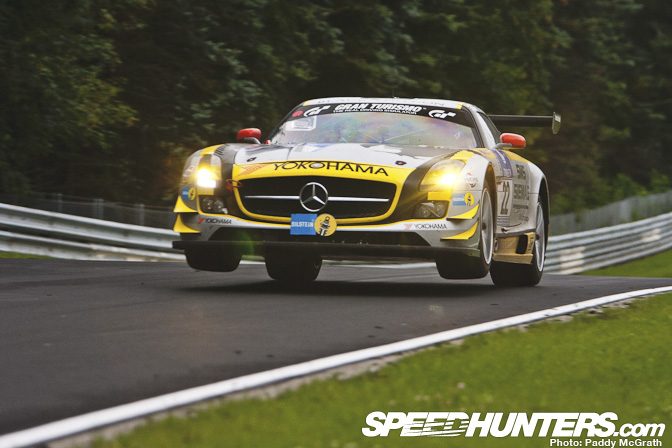Exactly. And this "force" (equal to, or opposite, centripetal force) is affecting tyre load, or "flex" if you will. The problem here is that we don't know for sure that tyre flex is even implemented, wich could of course be why centrifugal force feels iffy (and camber doesn't work as it should).
Nope. Inertia affects tyre load. A heavier car requires more centripetal force to accelerate it around the turn.
Centrifugal force (as you're describing it) does not exist. It's a mental shortcut, and it's not appropriate when you're discussing physics seriously.
True centrifugal force is the force the tyres exert on the
Earth.
On this video entry speed was too high, front end should have start falling earlier, so car would hit the other ramp in perfect angle. But driver went too fast for this jump and car started falling too late, resulting in too high angle when landing.
Nope.
The car landed at the correct point (more or less) on the other ramp, and so was going at the correct speed. If he had gone faster he would have overshot, or undershot if he'd gone slower.
You can hear him cut the throttle in the video, and see the car pitch when he does. Why? Newton's Third: For every action there is an equal and opposite reaction.
Consider the car and wheel as two separate entities. They're connected, but are free to rotate with respect to one another. Directly after the jump they're not exerting any forces on each other, the wheel is spinning at whatever speed, and the engine/car is matching that speed.
When the driver lets off the throttle, you now have a force acting to decelerate the rotating wheel. Say we're looking at the left rear wheel. The deceleration provides a force on the wheel in a clockwise direction. And so there's an equal and opposite force acting on the car, twisting it counterclockwise around the rear axle.
Were the car on the ground, it would not be free to rotate and would simply slow down. But in the air there's nothing to stop the car rotating. Energy is not destroyed, always conserved. The energy that the rotating wheel had when it left the jump has simply been transferred into rotating the body of the car instead. The car is much heavier than the wheel, and so will rotate much slower, giving decent fine control of the attitude of the car.
This is why jumping cars is very tricky. It's not just about driving at X speed, because any moron could do that. It's about getting the speed right AND having perfect timing and precision to control the attitude of the car before landing.







